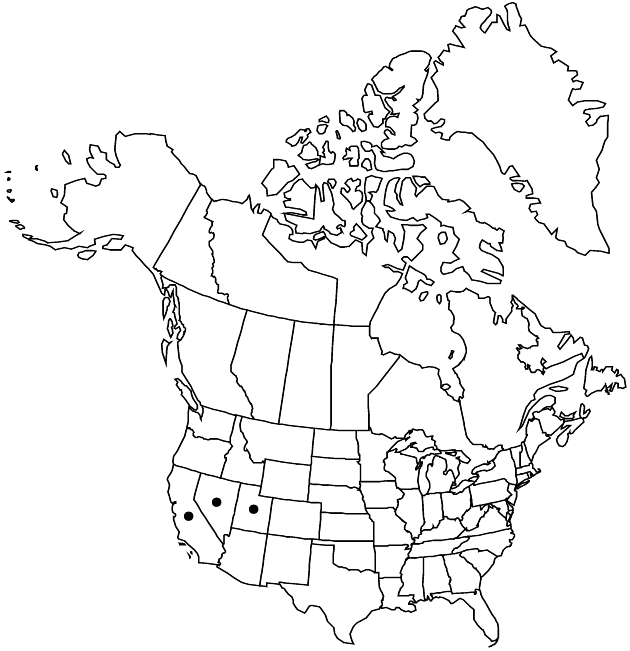Difference between revisions of "Tetradymia axillaris var. longispina"
Brittonia 26: 197. 1974.
Endemic
Basionym: Tetradymia spinosa var. longispina M. E. Jones Proc. Calif. Acad. Sci., ser. 2, 5: 698. 1895
Synonyms: Tetradymia longispina (M. E. Jones) Rydberg
Treatment appears in FNA Volume 20. Treatment on page 632.
imported>Volume Importer |
imported>Volume Importer |
||
| Line 59: | Line 59: | ||
|publication year=1974 | |publication year=1974 | ||
|special status=Endemic | |special status=Endemic | ||
| − | |source xml=https:// | + | |source xml=https://bitbucket.org/aafc-mbb/fna-data-curation/src/2e0870ddd59836b60bcf96646a41e87ea5a5943a/coarse_grained_fna_xml/V19-20-21/V20_1424.xml |
|tribe=Asteraceae tribe Senecioneae | |tribe=Asteraceae tribe Senecioneae | ||
|genus=Tetradymia | |genus=Tetradymia | ||
Latest revision as of 20:00, 5 November 2020
Peduncles and phyllaries tomentose to pannose, canescent. Cypselae: hairs 9–14 mm. 2n = 60, 62.
Phenology: Flowering spring.
Habitat: Sandy soils, creosote bush scrub, Joshua tree woodlands, pinyon-juniper woodlands, sagebrush scrub
Elevation: 600–1800 m
Distribution

Calif., Nev., Utah.
Discussion
Selected References
None.
Lower Taxa
None.